Kundeling Monastery, also known as “Danshe Chokorling,” means “All Peaceful.”
It is located on the southern side of Mopanshan, southwest of the Potala Palace in Lhasa, and is adjacent to the Guandi Temple (Kwon Ti Lakhang). The street where Kundeling Monastery is located is named after the monastery.
Kundeling Monastery is a Gelug Pa monastery of Tibetan Buddhism and one of Lhasa’s “Four Great Lings.” Inside the assembly hall, thangkas of Yamantaka, Chakrasamvara, and Guhyasamaja are displayed.
The monastery is very quiet, and the nearby traffic on Beijing Middle Road and Deji Road does not disturb its tranquility, making it feel like a secluded paradise.
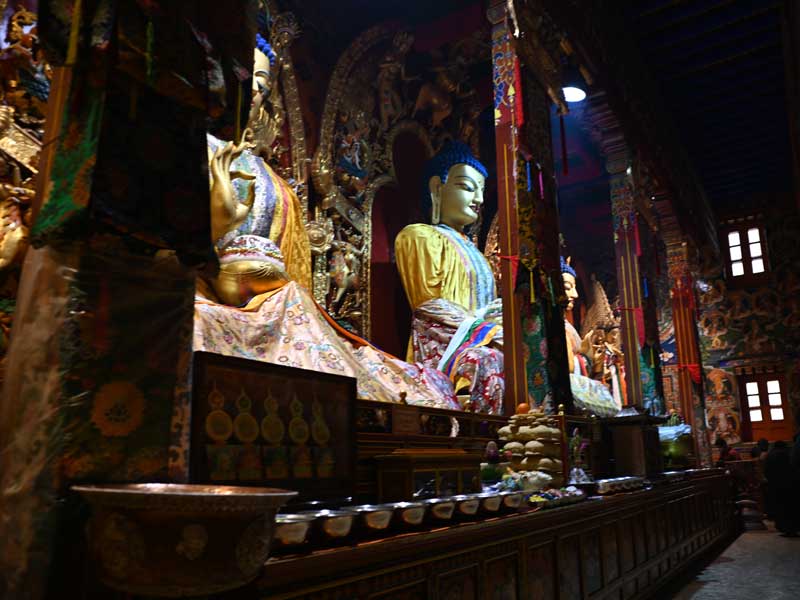
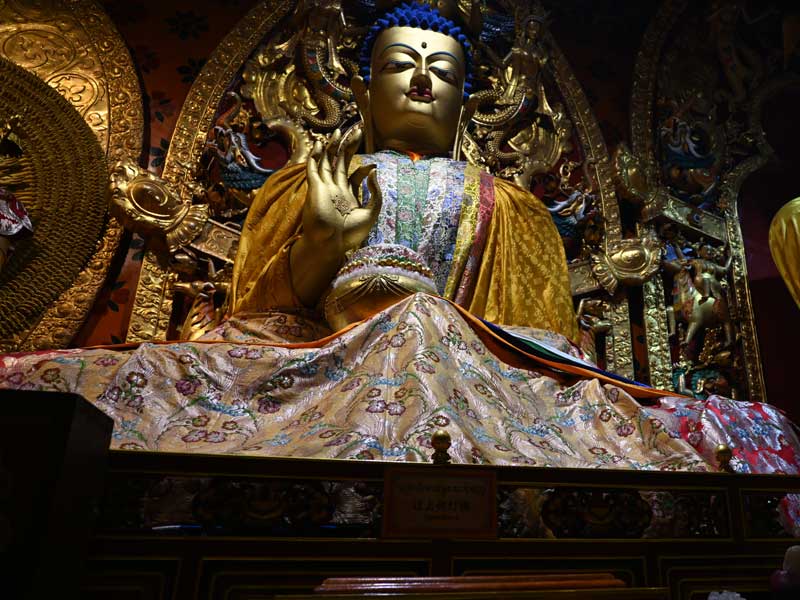
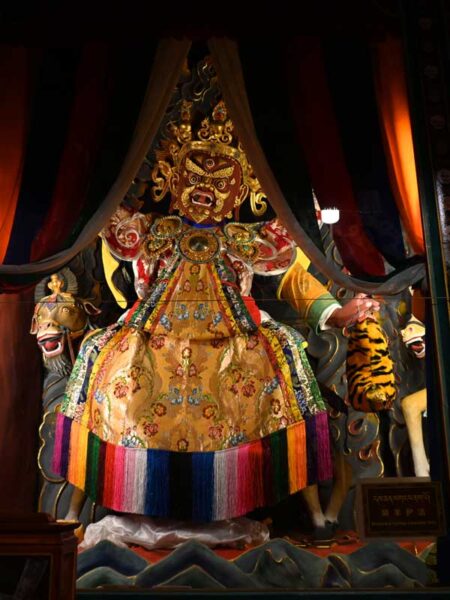
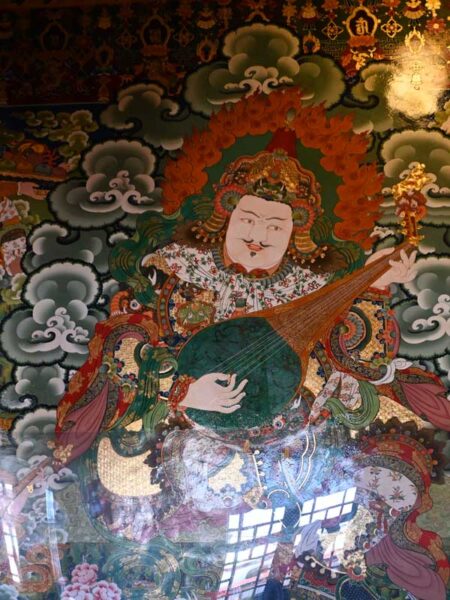
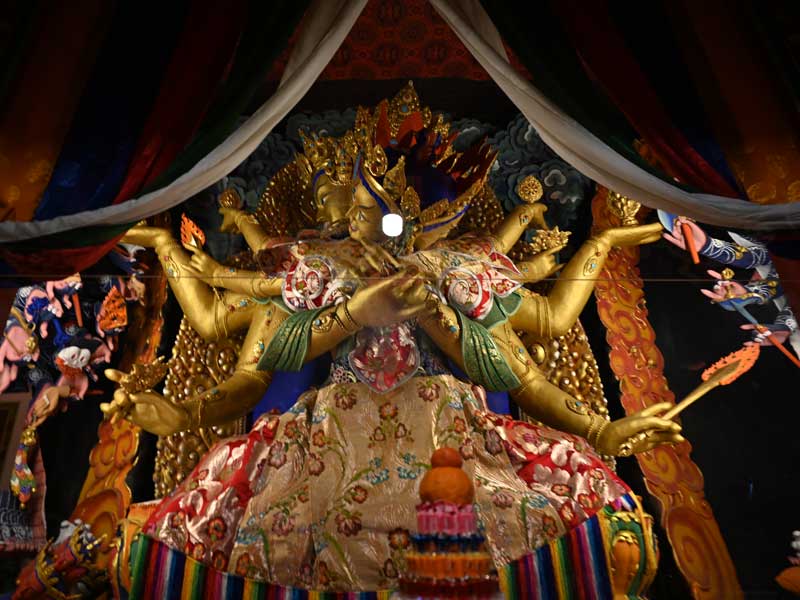
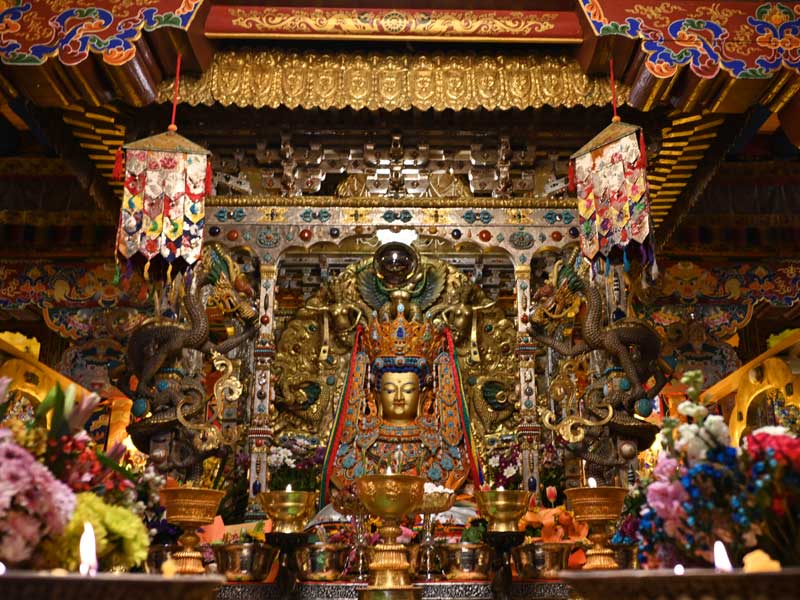
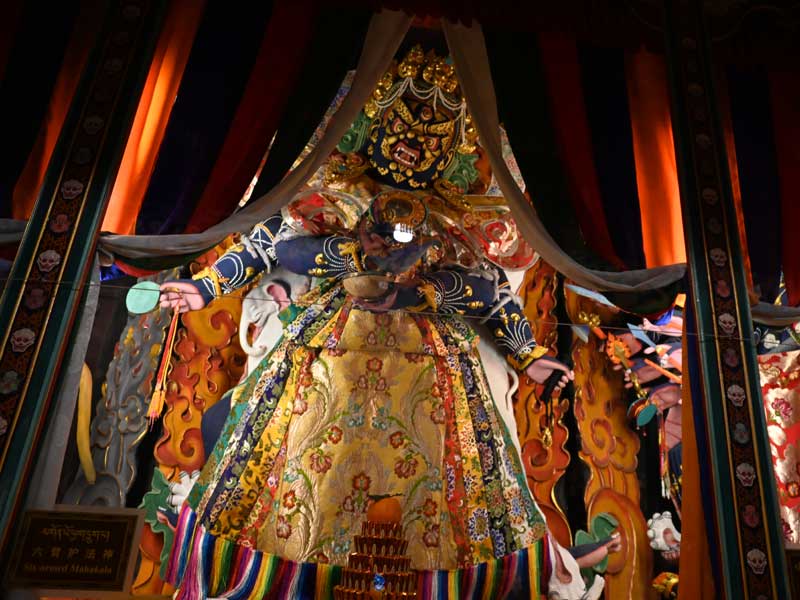
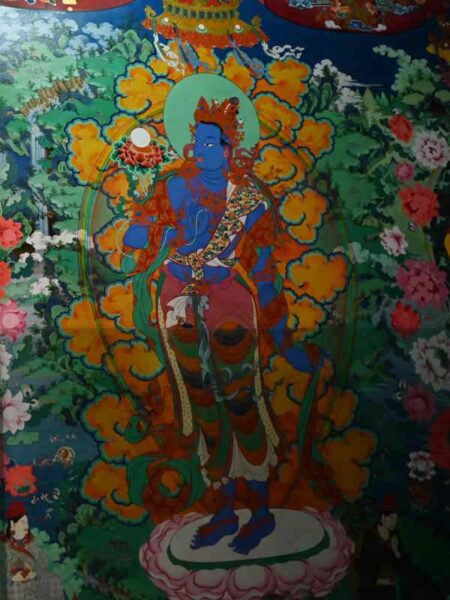
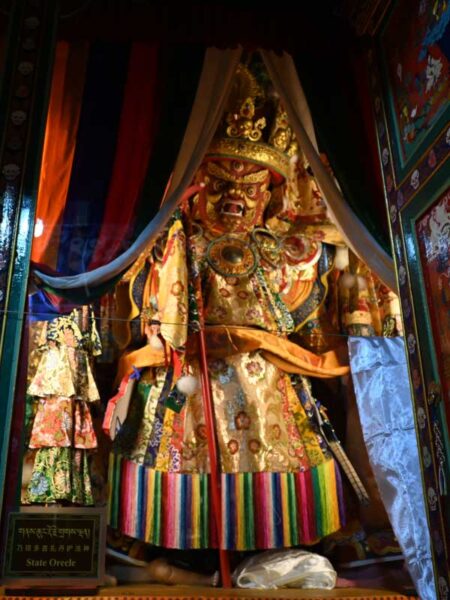
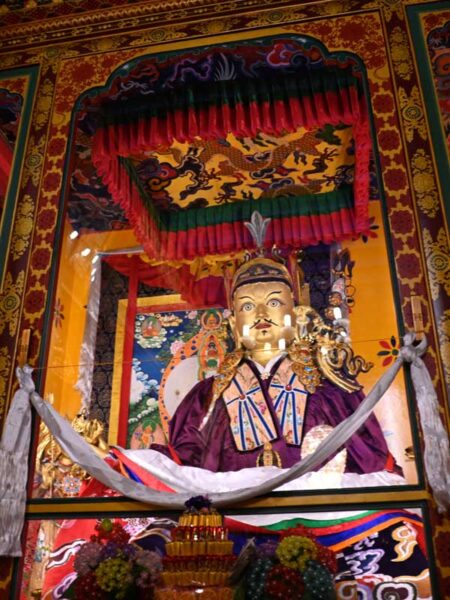
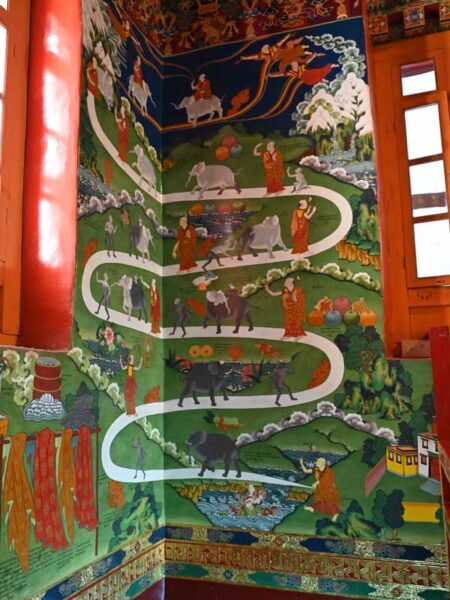
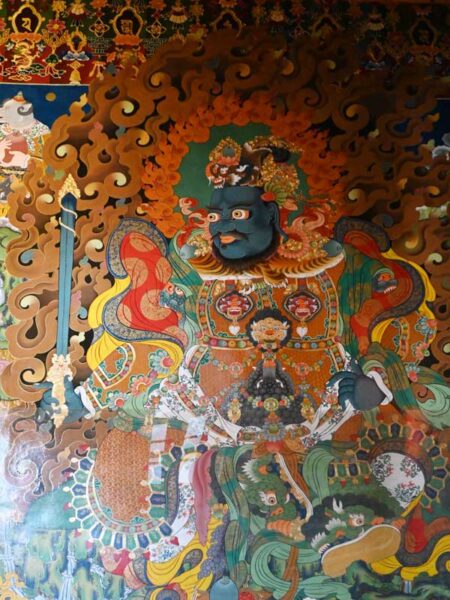
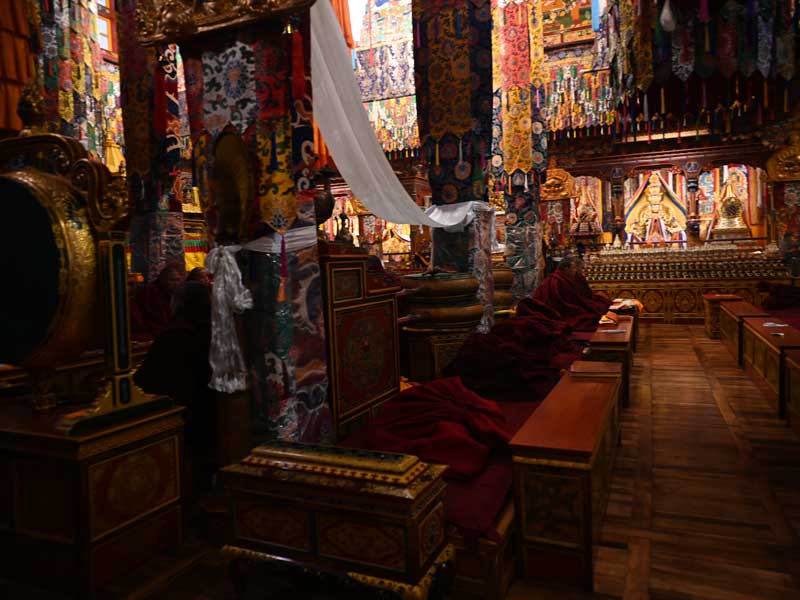
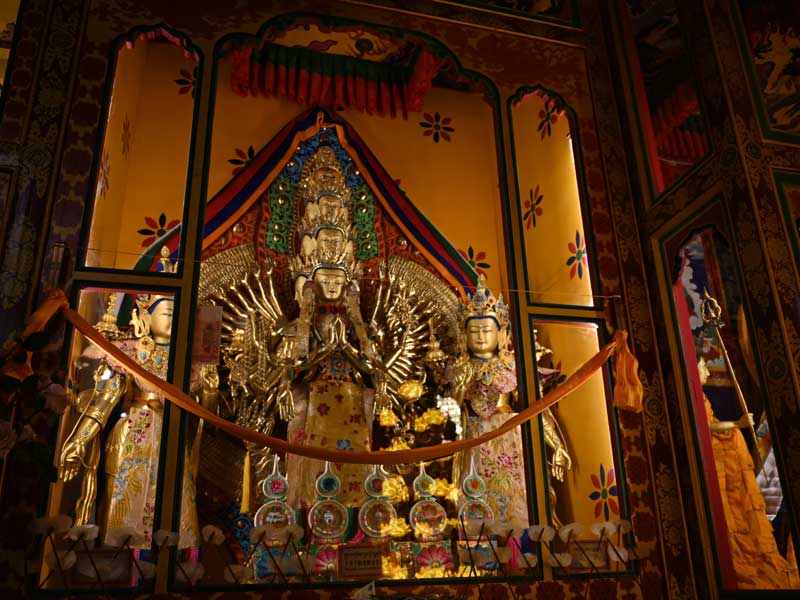
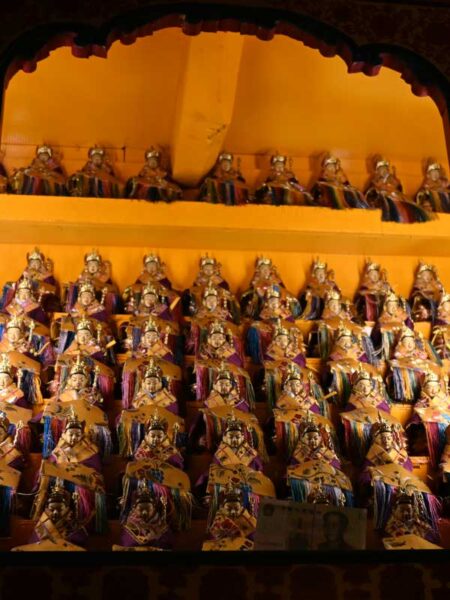
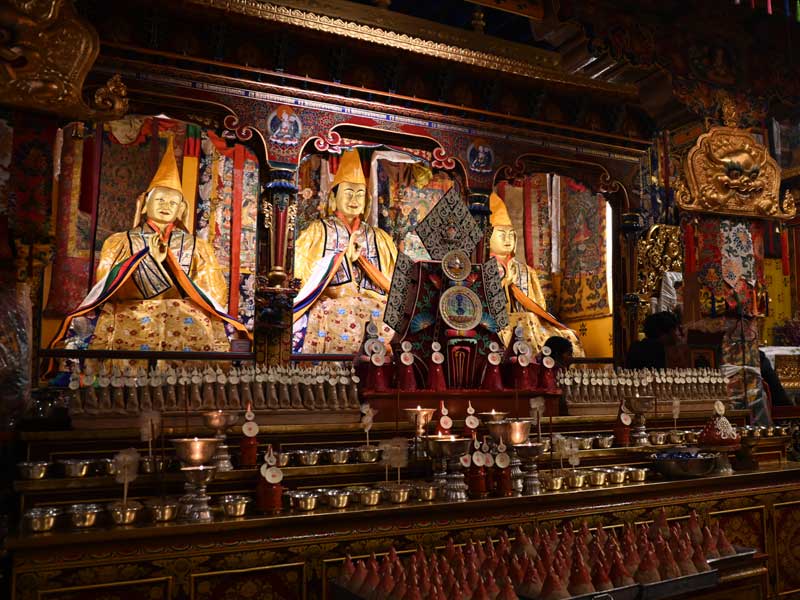
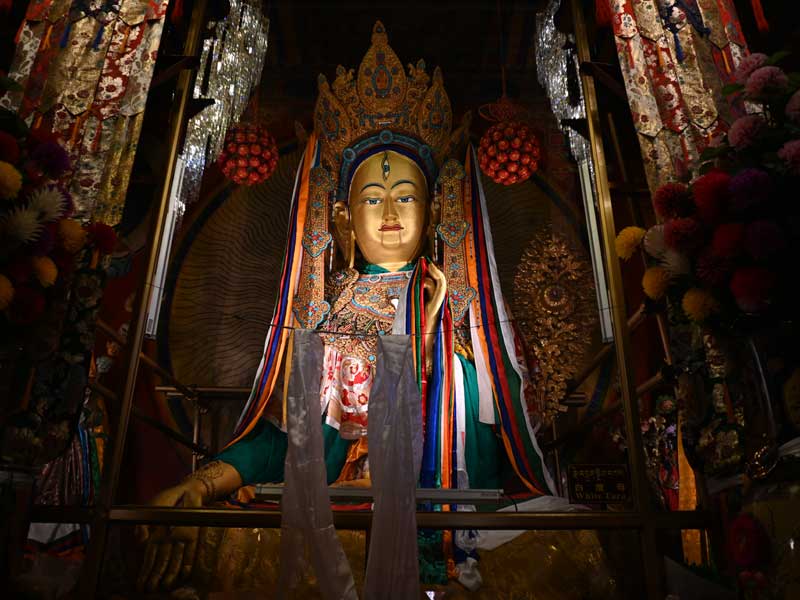
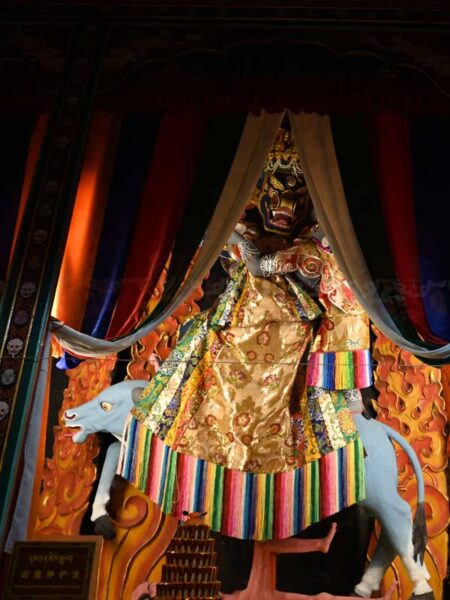
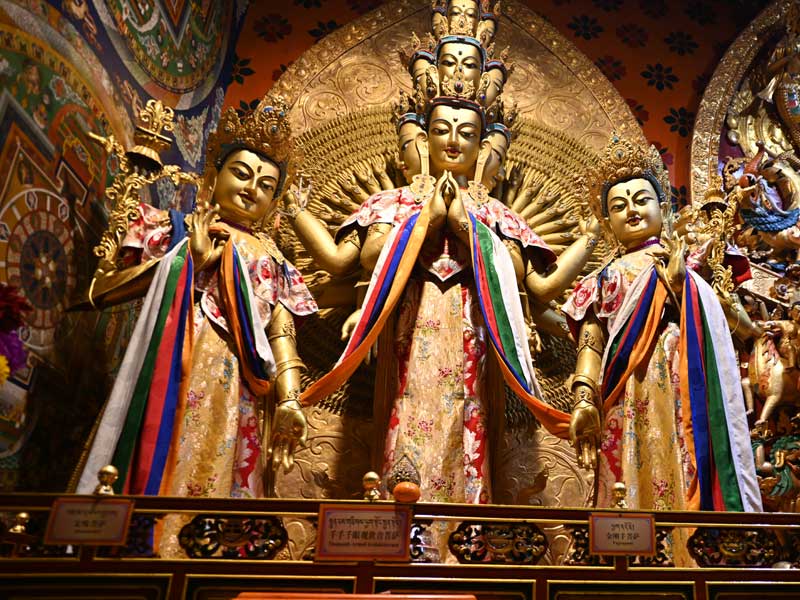
Overview
After its establishment, Kundeling Monastery became the second “Ling” following Tengye Ling Monastery. It was later expanded by successive Tatsag Rinpoches, gradually becoming a larger monastery.
Its mother monastery is Pasho Gonpa, located in Tongka Township of Pasho County. Pasho Gonpa was founded in 1473 and is one of the four major monasteries in Chamdo.
The Fifth Dalai Lama granted the Sixth Tatsag Rinpoche the properties of Pasho Gonpa and its subordinate monasteries, along with over 800 households of nearby farmers and herders, plus an additional 2730 households of serfs already bestowed upon him. Consequently, Pasho Gonpa became the private residence and administrative center of Tatsag Rinpoche.
Kundeling Monastery, founded by the Eighth Tatsag Rinpoche, became a subsidiary of Pasho Gonpa.
Moreover, because the Eighth Tatsag Rinpoche studied at Gomang Dratsang (College) of Drepung Monastery, Kundeling Monastery is also affiliated with Gomang College.
In terms of religious traditions, Pasho Gonpa primarily focuses on the exoteric teachings, while Kundeling Monastery emphasizes the esoteric teachings
Economically, the head of Kundeling Monastery’s administration is called the “Jasa” (Governor), while Pasho Gonpa’s head is known as “Changzha Qingmo.”
Tatsag Rinpoche, also referred to as “Jilong Hotogtu” (an honorary title for high-ranking noble monks), is one of the most influential reincarnation lineages in Tibet. He holds significant religious authority and has wielded considerable political influence in Tibet since the Sixth Tatsag Rinpoche.
In 1792, after quelling the Gorkha invasion, General Fuk’anggan, a prominent Qing Dynasty general, supervised the revision of the “Twenty-Nine Regulations for the Better Governance of Tibet,” also known as “The Newly Revised Twenty-Nine Articles of the Tibet Regulations.” Article 18 of these regulations stipulated: “In the future, the selection of abbots and reincarnated lamas for major monasteries will be decided jointly by the Dalai Lama, the Qing Imperial Commissioner, and Jilong Hotogtu, with certificates bearing the seals of all three parties.”
Brief History
In 1791 AD, the Gorkha army invaded Tibet. The following year, the Qing government dispatched General Fuk’anggan with a large army to Tibet, defeating the Gorkha forces. At that time, the 8th Tatsag Rinpoche, in collaboration with the 8th Dalai Lama, fully supported the Qing government’s troops sent to Tibet, achieving victory against the Gorkha invasion. After returning to Lhasa, General Fuk’anggan donated war spoils and “7000 taels of silver for the Emperor’s charitable use.” Tatsag Rinpoche was responsible for the construction of the Manjusri Monastery on Mopan Mountain, the Guandi Temple of the War God from the Han region, and Kundeling monastery at the foot of the mountain. These temples later became the private residences of the Regent Tatsag Rinpoche of Tibet.
In 1792 AD, to commemorate the joint efforts of the Manchu, Mongol, Han, and Tibetan peoples in repelling the Gorkha invasion, the Regent Tatsag Rinpoche (1760-1810) initiated the construction of this temple.
By 1794 AD, the construction of the temple was completed. Additionally, a Guandi Temple(Kwon Ti Lakhang) was built next to Kundeling, housing important cultural relics such as the stele erected at that time and plaques bestowed by Emperor Qianlong of Qing Dynasty. Both structures were designed in the Han architectural style.
In 1796 AD, Emperor Jiaqing of the Qing dynasty granted the temple the title “Dubstsang Yong’an Temple,” and it was designated to host 50 monks.
In 1956, Tatsag Rinpoche ordered the construction of a White Tara Hall and its connected buildings next to the monastery. The White Tara statue in this hall was the tallest in Tibet at that time.
By 1959, the number of monks of Kundeling monastery had grown to 134.
During the Cultural Revolution in the 1960s, Kundeling monastery was destroyed.
After the 1980s, with the implementation of new religious policies, the White Tara Hall and its connected buildings were restored.
Every year during the Tibetan New Year, Kundeling monastery creates and enshrines the “Great Vajradhara Mandala,” conducting a seven-day ritual. This tradition continues to this day.
Architecture
The main building of Kundeling monastery stands four stories tall, with stone walls and a top decorated with vermilion-painted Bema grass. The roof features glittering gilded vases, banners, and pennants.
At the center of the main building is a large assembly hall, measuring approximately 15 to 20 meters in width and 50 to 75 meters in length. It has four central columns, each nearly three stories high, supporting a large skylight.
At the back of the assembly hall is the Buddha hall, where the central room has four columns and houses a statue of Tsongkhapa. On either side, there are two-columned protector deity halls with various guardian deity statues.
After the death of Yeshe Lobsang Tenpai Gonpo (1760 AD – 1810 AD), the Buddha hall dedicated to Tsongkhapa was converted into a reliquary hall, housing three stupas.
The reliquary of the 8th Tatsag Rinpoche is wrapped in pure gold and adorned with many precious gems, while the reliquaries of the 9th and 10th Tatsag Rinpoches are covered in silver and decorated with gold niches and various jewels.
In the middle of the assembly hall, there is a throne for the 8th Tatsag Rinpoche, as well as gilded bronze statues of Tsongkhapa and his disciples, and a silver statue of Tatsag Yeshe Lobsang Tenpai Gonpo. The top floor bedrooms of the assembly hall display plaques and treasures bestowed by Qing emperors.
In front of Kundeling monastery, there was a pavilion with a stele covered in glazed tiles, standing 3.4 meters high. The stele, inscribed in both Tibetan and Chinese, detailed the repulsion of the Gorkha invasion and the construction of Kundeling
Plaques bestowed by Qing emperors and resident officials were displayed above the gateways, doors, and halls of Kundeling
The stele and pavilion are gone. The rebuilt Kundeling monastery is less than one-tenth of its original size. The main buildings now include:
White Tara Hall
The first hall, where visitors come to make divinations, is dedicated to the White Tara. Tibetan Buddhism recognizes about thirty Taras, believed to be manifestations of Avalokiteshvara’s tears, with White Tara and Green Tara being the most famous. Tibetans often consider Princess Wencheng, wife of Songtsen Gampo, to be a manifestation of White Tara, while Princess Bhrikuti Devi, who married Songtsen Gampo four years before Princess Wencheng, are seen as Green Tara manifestations. Both Taras are believed to rescue people from suffering, so many monasteries enshrine them. The White Tara statue in Kundeling Monastery is the largest in Tibet, about four meters tall, and was sculpted from red clay in 1986. Many Tibetan women make divinations before this benevolent statue, which is considered a protector of women, similar to the Chinese goddess of childbirth
Main Hall
Located next to the White Tara Hall, this is the primary hall of the rebuilt Kundeling
Thangtong Gyalpo’s Retreat
A path next to the Main Hall leads to Thangtong Gyalpo’s retreat in the mountainside.
Additionally, on the way from Kundeling monastey to the Guandi Temple, at the intersection of Deji Middle Road and Beijing Middle Road, there is a large rock at the foot of the mountain. It is said that Princess Wencheng once rested here. Tibetans often rub their backs, thighs, calves, and knees against the rock, believing it can cure rheumatism and arthritis. The rock has been polished smooth and shiny from years of contact.
Kundeling Ladrang
After the 8th Tatsag Rinpoche entered the political arena, Kundeling Ladrang became a significant political and religious group, rivaling Tengye Ling Ladrang and Tsemon Ling Ladrang in influence. Its power remained stable in the complex upper-level political struggles. Under the influence of successive Tatsag Rinpoches, Kundeling Ladrang’s influence gradually spread throughout Tibet. Since the time of the 8th Tatsag Rinpoche, the Basum region in Kham has never had a government-appointed commissioner, but instead, Kundeling Ladrang appointed a strong official to manage the political and religious affairs, acting with the authority of a commissioner. Basum Ladrang was established there.
Kundeling Ladrang’s administrative structure was more extensive and had more staff than the other three Ladrangs. Kundeling Ladrang was the primary office, with Basum Ladrang as the secondary office. The full representative of the Ladrang was the Tatsag Rinpoche. Under him, a Zasak appointed by the Qing government managed administrative affairs. Basum Ladrang was managed by a senior official appointed by the Tatsag Rinpoche and the Kundeling Zasak. The Zasak position was filled by one of two monks recommended by the Tatsag Rinpoche and approved by the Dalai Lama. If the Tatsag Rinpoche was too young or unable to serve, the Zasak would act on his behalf. Below the Zasak, there were ten Dejiang Ang and fifty-eight Shadui Ba, responsible for managing the administrative and financial affairs of the Ladrang. Kundeling Ladrang’s butter, meat, and other pastoral products were mainly provided by Basum Ladrang, while grain was sourced from Ü-Tsang. The saying “Who can match Tsurphu Monastery in wealth, and who can match Kundeling Monastery in grain reserves” reflects Kundeling Monastery’s abundance of grain.
Kundeling Dratsang
Kundeling Dratsang was responsible for the monastery’s religious activities and regulations, supervised directly by Kundeling Ladrang. It had one Lobpon, one Gegui, two Umze, and one Changzha Qingmo, all appointed by the Kundeling Ladrang and approved by the Tatsag Rinpoche. During the regency of the 8th Tatsag Rinpoche, the Qing Emperor Qianlong specified the number of monks at fifty. By 1959, the number had increased to 134. Despite Gongdelin Ladrang’s wealth, each monk’s annual stipend was only 15 Tibetan Gram (1 Tibetan gram equals 28kg) measures of grain, half of what monks in Tsemonling Monastery received, while the leaders of the Dratsang and Ladrang officials received over 30 Tibetan Gram. Kundeling monks, like those of other “Lings,” did not need to participate in the annual Monlam Great Prayer Festival.



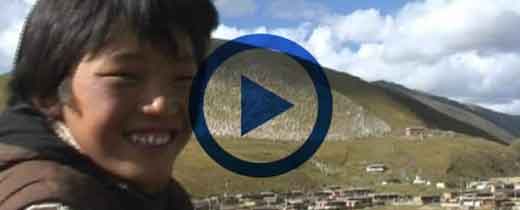

Leave a Reply